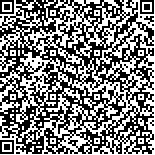| 引用本文: |
农雅萍,朱露露,陈思雨,孙梅梅,兰蕾.隔姜灸对肝郁脾虚型功能性胃肠病大鼠血清代谢组学的影响[J].湖南中医药大学学报,2022,42(10):1695-1704[点击复制] |
|
| |
|
|
| 本文已被:浏览 3169次 下载 1475次 |
| 隔姜灸对肝郁脾虚型功能性胃肠病大鼠血清代谢组学的影响 |
| 农雅萍,朱露露,陈思雨,孙梅梅,兰蕾 |
| (广西中医药大学, 广西 南宁 530001;广西中医药大学附属国际壮医医院, 广西 南宁 530201) |
| 摘要: |
| 目的 基于UPLC-Q-TOF/MS代谢组学方法探讨隔姜灸对肝郁脾虚型功能性胃肠病(functional gastrointestinal disorders, FGIDs)大鼠血清代谢组学的影响。方法 将50只雄性SPF级SD大鼠随机均分为正常组、模型组、隔姜灸组、百忧解组和莫沙必利组。正常组正常饲养,其余4组采用复合病因法造模,连续21 d。隔姜灸组捆绑束缚并隔姜灸神阙穴30 min,灌服0.9%氯化钠溶液;其余3组每日捆绑束缚30 min后,模型组灌服0.9%氯化钠溶液,百忧解组灌服浓度为1 mg/mL百忧解溶液,莫沙必利组灌服浓度为1 mg/mL莫沙必利溶液,均连续干预14 d。观察各组大鼠一般情况变化;在造模前后及干预完成后分别进行旷场实验;实验结束后行系统解剖,测定胃残留率和小肠推进率,并对各组大鼠进行血清代谢组学分析。结果 (1)造模后,与正常组及模型前大鼠相比,其余各组大鼠爬格子数、站立数、修饰数减少(P<0.01);干预后与造模后比较,隔姜灸组爬格子数、站立数、修饰数均增加(P<0.05或P<0.01);其余各组大鼠无明显变化(P>0.05)。(2)与正常组大鼠比较,模型组和百忧解组大鼠小肠推进率均降低、胃残留率均升高(P<0.01);与模型组大鼠比较,隔姜灸组和莫沙必利组小肠推进率均升高(P<0.05)、胃残留率均显著降低(P<0.01)。(3)代谢组学分析共筛选出潜在生物标志物8种,分别为肌酸、苯基丙氨酸、色氨酸和溶血卵磷脂的5个分型LysoPC(18:1)、LysoPC(18:2)、LysoPC(18∶3)、LysoPC(16∶1)、LysoPC(16∶0)。归属注释和富集分析得到与疾病相关的关键代谢通路:亚油酸代谢通路,苯丙氨酸、酪氨酸、色氨酸生物合成通路,苯丙氨酸代谢通路,甘油磷脂代谢通路,精氨酸和脯氨酸代谢通路。结论 隔姜灸能促胃肠动力抗抑郁,改善FGIDs大鼠肝郁脾虚症状;隔姜灸可能通过调节肌酸、苯基丙氨酸、色氨酸、溶血卵磷脂等物质,调节亚油酸代谢和苯丙氨酸、酪氨酸、色氨酸生物合成等。 |
| 关键词: 隔姜灸 功能性胃肠病 肝郁脾虚 代谢组学 超高效液相色谱-四级杆串联质谱 潜在生物标志物 关键代谢通路 |
| DOI:10.3969/j.issn.1674-070X.2022.10.017 |
| 投稿时间:2021-12-01 |
| 基金项目:广西自然科学基金面上项目(2018GXNSFAA050148);广西中医药适宜技术开发与推广项目(GZSY21-42);2017年广西中医药大学引进博士科研启动基金项目(2017BS05);广西中医药重点学科壮医经筋推拿学(GZXK-Z-20-61);广西中医药重点学科壮医外治学(GZXK-Z-20-62)。 |
|
| Effects of ginger-separated moxibustion on serum metabolomics in rats with functional gastrointestinal disease caused by liver qi stagnation and spleen deficiency |
| NONG Yaping,ZHU Lulu,CHEN Siyu,SUN Meimei,LAN Lei |
| (Guangxi University of Chinese Medicine, Nanning, Guangxi 530001, China;International Zhuang Hospital, Guangxi University of Chinese Medicine, Nanning, Guangxi 530201, China) |
| Abstract: |
| Objective To investigate the effects of ginger-separated moxibustion on serum metabolomics in rats with functional gastrointestinal disorders (FGIDs) caused by liver qi stagnation and spleen deficiency based on UPLC-Q-TOF/MS metabolomics. Methods Fifty male SPF SD rats were randomly divided into the normal group, model group, ginger-separated moxibustion group, fluoxetine group and mosapride group. The normal group was fed normally, and the other 4 groups were modeled by composite etiology method for 21 d. Ginger-separated moxibustion group was bound and treated with ginger-separated moxibustion on "Shenque" (RN8) for 30 min, and 0.9% sodium chloride solution was given by intragastric administration. After 30 min of daily binding and restraint in the other three groups, the model group recieved 0.9% sodium chloride solution by intragastric administration, and the prozac group was given 1 mg/mL prozac solution by intragastric administration. The mosapride group was given 1 mg/mL mosapride solution for 14 d. The general changes of rats in each group were observed. The open field experiments were performed before and after modeling and after intervention. After the experiment, we performed systematic anatomy to determine the gastric residual rate and intestinal propulsion rate, and performed the serum metabolomics analysis for each group of rats. Results (1) After modeling, compared with those of the normal group and the pre-model group, the number of climbing lattice, standing and modification in other groups decreased (P<0.01); compared with the model group, the ginger-separated moxibustion group showed increase of the climbing lattice, standing and modification after intervention (P<0.05 or P<0.01). There were no significant changes in the other groups (P>0.05). (2) Compared with the normal group, the model group and the prozac group showed increase in the small intestinal propulsion rate and the gastric residual rate (P<0.01). Compared with the model group, the ginger-separated moxibustion group and the mosapride group both showed increase in small intestinal propulsion rates (P<0.05), and the gastric residual rates decreased significantly (P<0.01). (3) A total of 8 potential biomarkers were screened by Metabolomics analyses, which were creatine, phenylalanine, tryptophan, and 5 types of lysophosphatidylcholine including LysoPC (18:1), LysoPC (18:2), LysoPC (18:3), LysoPC (16:1), LysoPC (16:0). The key metabolic pathways related to diseases obtained by the attribution annotation and enrichment analysis were linoleic acid metabolic pathway, biosynthesis pathway of phenylalanine, tyrosine and tryptophan, phenylalanine metabolic pathway, glycerol phospholipid metabolic pathway, and metabolic pathway of arginine and proline. Conclusion Ginger-separated moxibustion may promote gastrointestinal motility, take the anti-depression effect, and improve symptoms caused by liver qi stagnation and spleen deficiency in FGIDs rats; it may adjust the biosynthesis of linoleic acid metabolism and phenylalanine, tyrosine, tryptophan biosynthesis by regulating creatine, phenylalanine, tryptophan, lysophosphatidylcholine, etc. |
| Key words: ginger-separated moxibustion functional gastrointestinal disorders liver qi stagnation and spleen deficiency metabolomics ultra performance liquid chromatography-quadrupole tandem mass spectrometry potential biomarkers key metabolic pathways |
|

二维码(扫一下试试看!) |
|
|
|
|




